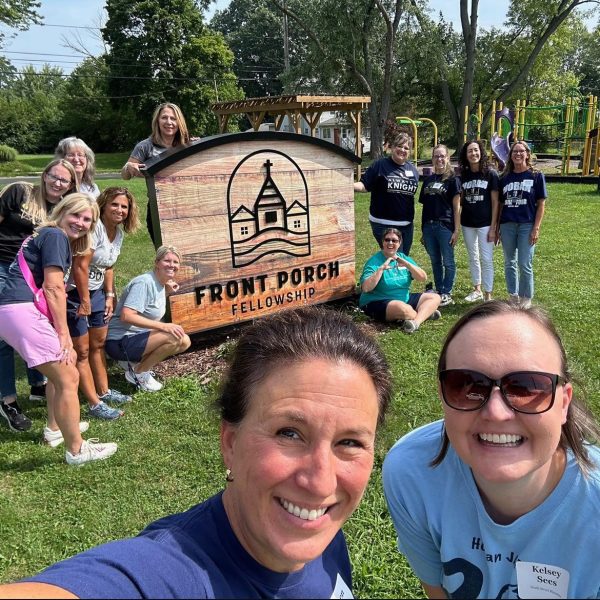Shopaholic’s dream or germaphobe’s nightmare?
Hours of anticipation, countless days of camping out, all building to a few minutes of pushing and shoving like life depends upon it. While this may sound like a scene straight out of a horror movie or a local BMV at lunch hour, in reality, it perfectly describes the anarchy and mayhem of Black Friday.
Black Friday, a time-honored tradition within the United States, has been celebrated in its various forms since the mid-20th century. As the unofficial kick-off to the holiday season, advertisements for deals and carefully crafted shopping routes dominate conversation in the weeks leading up to Thanksgiving.
However, the circumstances this year appear to be turning this shopaholic’s dream into a germaphobe’s nightmare.
Due to the COVID-19 pandemic, the usual desire to zoom through the Thanksgiving feast and race to the stores is non-existent. Fearing the virus, many people plan to heed local health ordinances, cancel the traditional Black Friday attack plan and shop from the safety and comfort of home.
According to a Deilotte survey cited by CNBC, 61 percent of Americans plan to play it safe and shop from home. This staggering shift to online shopping puts this year’s Black Friday in the record books with online surpassing traditional for the first time. The same survey also notes that 74 percent plan to shop online throughout the entire season, up 12 percent from 2019.
Throughout the pandemic, traditional retail stores remain among the most affected by lock-downs and COVID-19 protocols. In an article published by Fox News, Kathy Gersh, a former executive for Nordstrom, elaborates on these struggles, claiming that in order to survive, brick-and-mortar locations must adapt and provide a unique shopping experience–both now and post-pandemic.
Ever since Amazon launched its Thanksgiving weekend deals in 2013, traditional in-person Black Friday shopping experiences have lost the wonder, value and necessity they once held. To compete with this success, retailers have attempted to better appeal to the public interest, opening stores Thanksgiving night and amping up the price cuts.
Even this year, stores like Walmart, Target and Dick’s Sporting Goods began rolling out Black Friday deals weeks before the fated day, hoping to avoid crowding but tout a typical sales quotient. In addition to these measures, these same corporations along with many others plan to close Thanksgiving night to prevent the usual camping, crowding and massacre these sale prices present.
However, many of these efforts may still be in vain. In her article, Gersh cites a study claiming that six in 10 people found new ways to shop during quarantine. It also shows 45 percent of Americans have made the transition to fully shopping online. As FastCompany.com puts it, less in-store shopping, less impulse purchases, more money saved–especially in a year as economically challenging as this.
So how can brick-and-mortar businesses hope to turn a profit and survive this Black Friday–let alone the post-pandemic economy?
First, businesses must continue to emphasize the safety and necessity of an in-person shopping experience. With all of the fear brought on by COVID-19, consumers need reassurance that retailers are taking necessary precautions. Following mask mandates, limiting capacity and restricting dressing-room access may appear to impede business success, but in reality they restore the consumer’s faith in the experience.
Once safety issues have been addressed, retailers must also consider the in-store experience. Amid pandemic stress, associates and employees alike might find it difficult to do their job, especially when policing the store for maskless customers occupies much of their time. Gersh explains that going forward, sales associates must assume a more interactive and helpful role in the shopping experience. Only through these necessary changes can businesses hope to rival the efficiency of the online experience.
All-in-all, most retailers seem to be following these necessary steps to reshape their businesses. While the long lines and fist-fights might not accompany this Black Friday, the precautions taken will save brick-and mortar stores in the long run.
While the normal hustle and bustle of Black Friday may not be present this season, new traditions and quality family time will take its place. This year hasn’t given much to be thankful for; maybe this dramatic change in holiday shopping brings families closer together, allowing them to count their blessings.
If planning to venture out this Black Friday, stay safe, stay smart. Wearing a mask and social distancing not only slows the spread, but allows for this sacred shopping tradition to continue for years to come. And, with the way this year has gone, I wouldn’t be surprised if a zombie apocalypse occurs; your past Black Friday experiences might just come in handy.
To see a list of business hours this holiday season, click the link below (times may vary by location).

